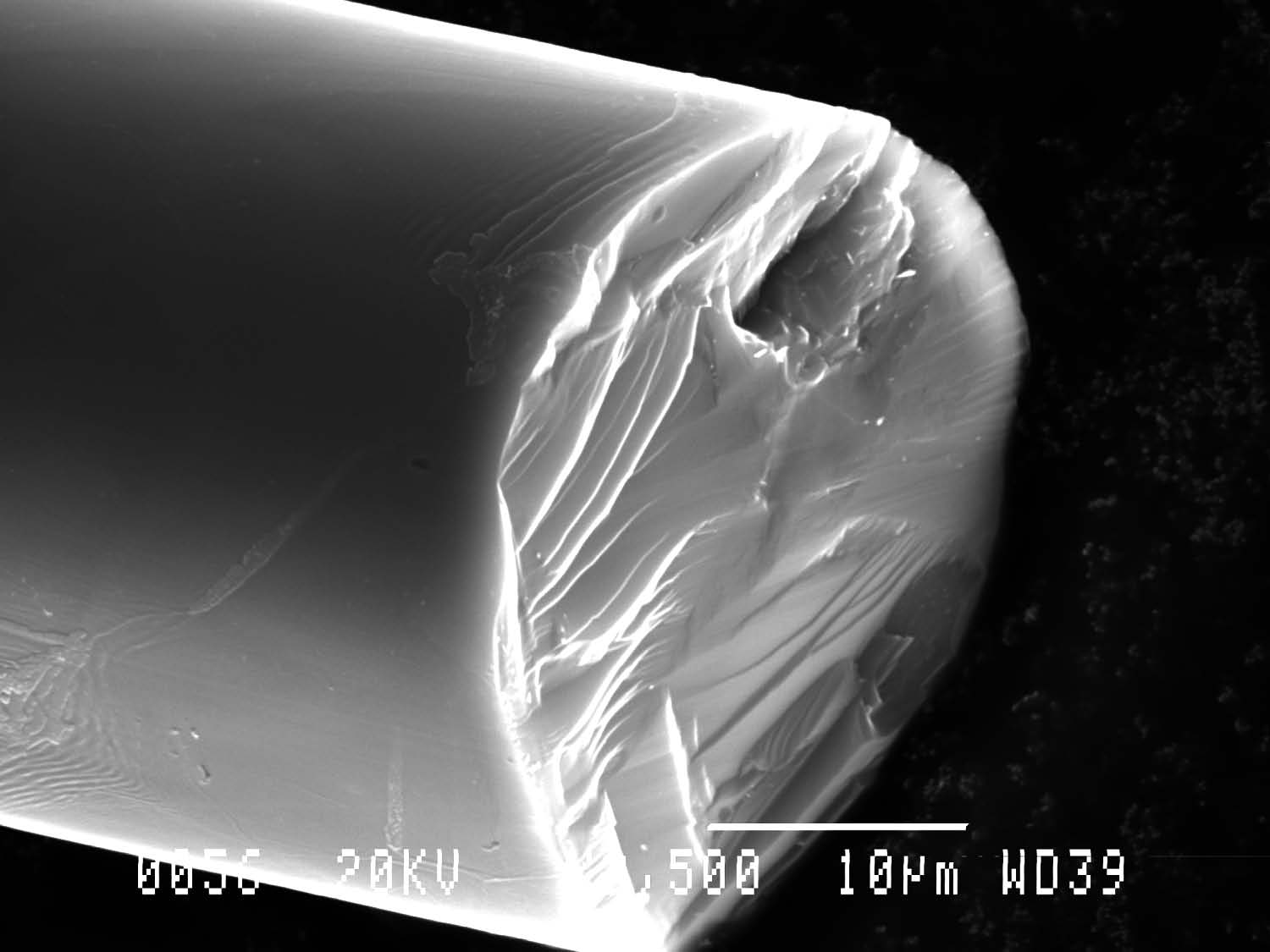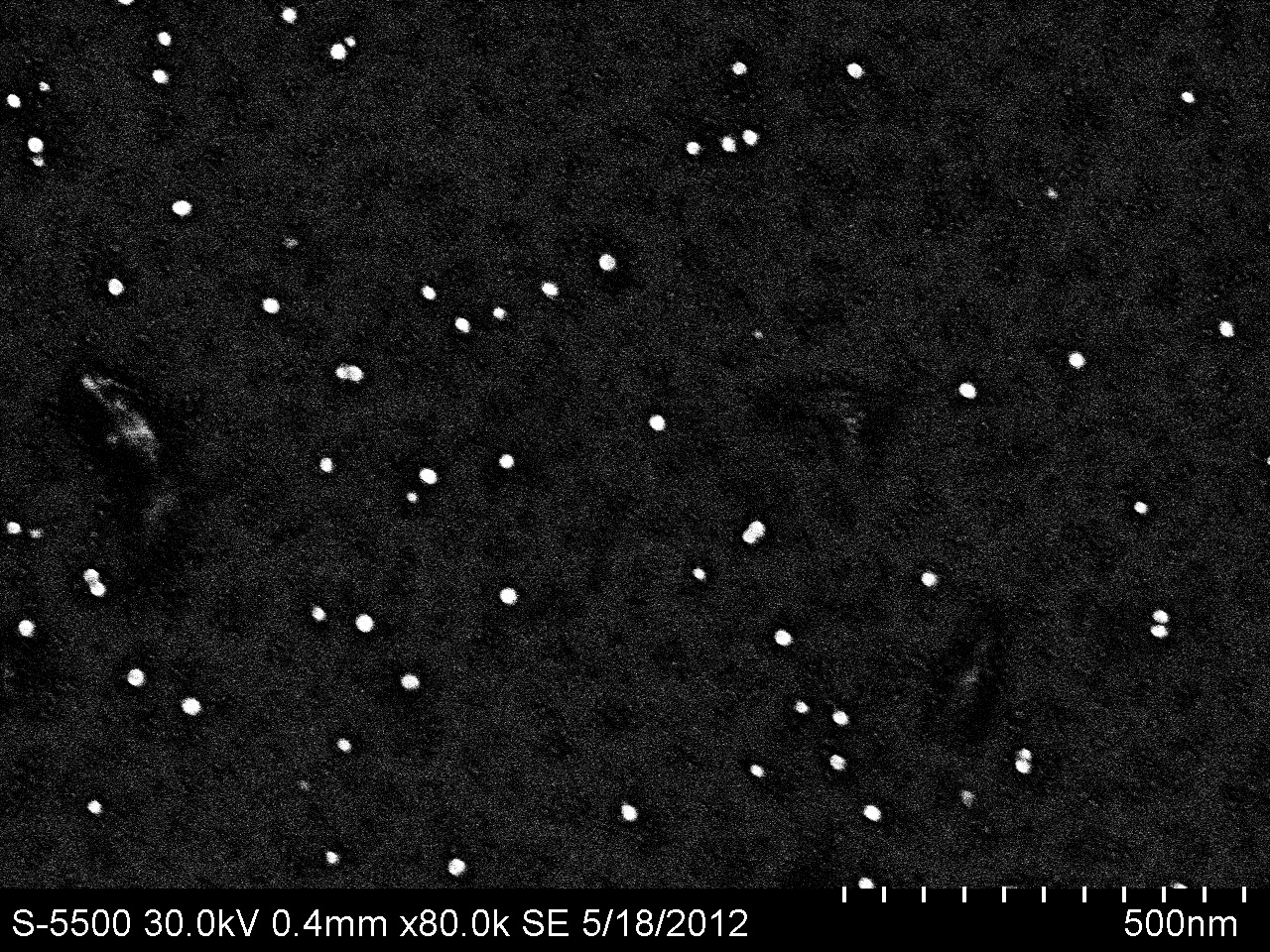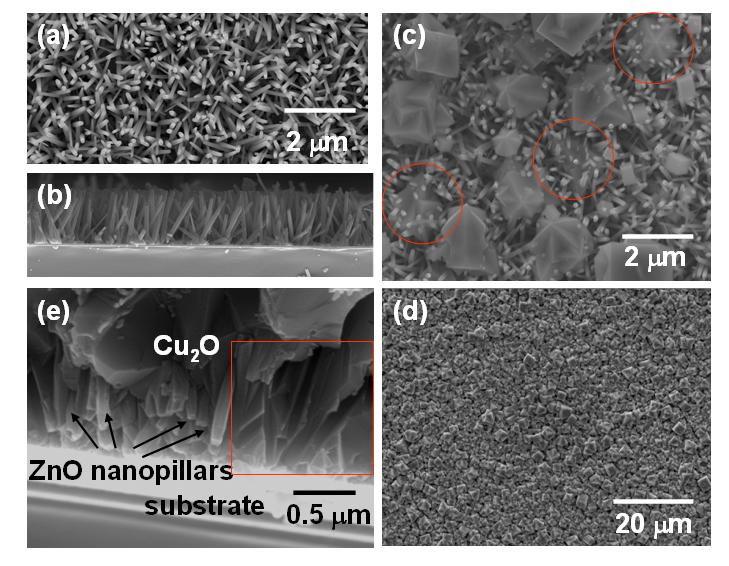| Home | Research | People | Facilities | Publications | Physics Dept | NTNU |

Silicon microwires

| Silicon microwires are being made using optical fiber drawing technology. Demonstration solar cells have been made using this material, as described in Scientific Reports 4 6283 . |  |
Nanostructures for improved solar cells

| Improved solar cell characteristics can be acheived by increasing absorption or shortcircuit current. Gold nanoparticles distributed on the surface of a silicon wafer improve absorption; we have a
project on improved methods for applying particles of varying shapes and sizes. ZnO nanowires are being investigated for improving the absorption, and increasing the short-circuit current of electrodeposited solar cells. |  |
Molecular Beam Epitaxy and Optical Properties of ZnS
In collaboration with Irina Sorokina, NTNU
Ultra-high vacuum growth of transition metal-doped ZnS is being investigated for potential applications as a laser material and a candidate for Intermediate Band Solar Cells. Clustering of the impurities is deleterious when there is only one impurity, but combining two dopants is expected to lead to improved performance.
Longitudinal Magneto-Optic Kerr Effect Enhancement using Dielectric Coatings
We are using dielectric coatings to enhance the longitudinal MOKE signal from thin Ni films and microstructures, and have developed MATLAB code for the simulation and design of optimized film parameters. OOMMF simulations are used in the exploration of nanomagnetic interactions. These structures can be used to make magnetic logic circuits.
Molecular imprint thin films
In collaboration with Prof. Joseph BelBruno, Chemistry Dept, Dartmouth College
We use laser ablation of block copolymer-amino acid complexes to form sub-micron films with memory of their amino acid content. These films, with selective binding properties, may then be used for selective rebinding, and hence detection, of the originally imprinted molecule.
Optical Properties of Nanostructures and Nanoparticles
The optical properties of periodic structures with dimensions on the order of the wavelength produce interesting phenomena, such as interference-based optical filters. We are investigating the properties of materials where the subwavelength structure is purposefully manipulated to modify the optical response of a system. This includes 0-, 1- and 2-dimensional periodic structures with length scales of 10nm-100nm. Both active and passive structures are being investigated.